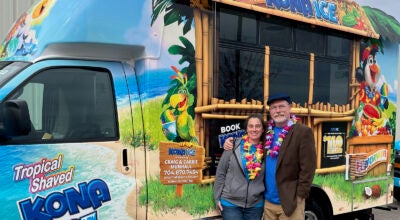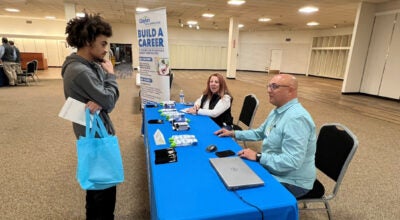Salisbury’s Lane Wallace part of trio to inspire energy-efficient restaurant
Published 12:00 am Friday, September 4, 2020
SALISBURY — Most people only visit Walt Disney World. Lane Wallace helped build a restaurant there.
As a kid growing up in Salisbury, Wallace says she relished the weekends that she spent at her grandparents’ house in the mountains. Always a lover of nature, those few days were a time when Wallace could go into the woods and explore.
“Every weekend that my grandparents would let me in the summer, I’d go up to the mountain house with them and disappear into the forest with a book and read and hike and play,” Wallace said. “I’d always go up to the mountains and enjoy nature and it was always a huge passion of mine.”
Wallace carried that passion for the environment with her once she graduated from Salisbury High School and went to college at UNC Chapel Hill, where she double majored in business and public policy, with a concentration in environmental policy. After graduating, Wallace decided to enter the family trade: realty. However, the economic downturn of the late 2000s prompted Wallace to change her career path.
“In 2007, when the world was crashing, I wanted to get into the real estate industry like my family,” Wallace said. “When the first two companies I worked for in Charlotte went bankrupt, I realized that it wasn’t as good of a career, so I followed another passion of mine: the environment.”
Instead of trying to sell buildings, Wallace put solar panels on top of them. After working in the solar industry for several years, Wallace eventually decided to go back to school. But this time, her sole focus would be the environment. She enrolled in the Nicholas School of the Environment at Duke University and focused on energy and the environment and sustainable systems analysis.
During her time at Duke, Wallace and her fellow master’s partners, Maria Ramirez Millan and Emily Conner, received an unexpected opportunity: the chance to work with one of the world’s biggest brands — McDonald’s.
“At one point, the McDonald’s director of energy was invited to an event,” Wallace said. “They had no formal relationship, had never had any partnership or anything with Duke. One of my partners met Steve DePalo (director of North American sustainability at McDonald’s) and he was like, ‘Hey, we should do a project. We want to be more energy efficient and do cool sustainability projects.’”
They met with other McDonald’s officials and formulated a project that would serve both as Lane’s master’s work and as a way for the major company to become more energy efficient.
Wallace, Millan and Conner began to analyze what it would take for a McDonald’s restaurant to reduce its carbon footprint to almost zero. At first, the idea seemed far-fetched, especially considering that fast food restaurants are some of the most high-energy use buildings in the world.
“We started off talking about doing a project that would help them reduce their energy use by 10%,” Wallace said. “Then, by three or four phone calls, we were like, ‘Well, let’s just see if we could do a net-energy zero building.’ That’s such a huge goalpost that we were all laughing and saying, ‘Of course we’re not going to actually build this thing.’”
The trio began researching energy saving practices that could, and have been, implemented in many McDonald’s stores across the globe. They also began modeling energy uses for a one-of-a-kind McDonald’s restaurant that would be nearly net-zero.
“We researched and suggested small practices that could be implemented at McDonald’s stores everywhere,” Wallace said. “The idea of putting it all together was kind of a pipe dream, but we did the report and came up with it. After three months of working on it, we thought that it was actually feasible.”
Wallace has since graduated from Duke and returned to Salisbury to work with her family’s realty company and serve as vice president for development at Nest Homes, a company based in Mooresville that designs and builds efficient houses. McDonald’s, using the research and modeling that Wallace’s team conducted, continued to develop plans for an energy-efficient restaurant.
Earlier this year, the fast food chain broke ground on a flagship store on Buena Vista Drive on the west side of Disney’s property. The store, which creates enough renewable energy on-site to cover 100% of its energy needs on an annual basis, will serve as a testing site to explore more sustainable business practices. The building features solar panels, stationary bikes that create power and glass that helps generate energy.
The restaurant is a culmination of Wallace and her partners’ work along with years of development by McDonald’s.
“It’s awesome. It’s so exciting,” Wallace said. “It’s really neat to work on something like that and to work with a major corporation who is a leader in their industry and to see them step up without any pressure from anyone and do something like this.”
The store opened several weeks ago, but is currently only taking to-go and drive-thru orders because of the COVID-19 pandemic. Although one of her groupmates visited the store to see what their work turned into, Wallace hasn’t been there yet.
“As soon as COVID fears are alleviated, my sister has promised to take me and her kids,” Wallace said. “Get down there and have some fun as soon as the COVID regulations make it feasible.”
While the kids will be excited to see famous Disney characters and enjoy the rides, Wallace is looking forward to a trip to McDonald’s.





